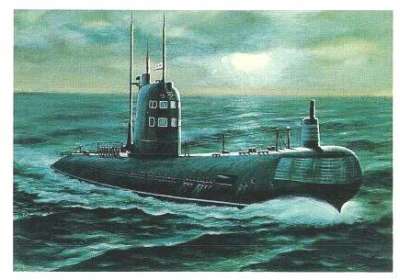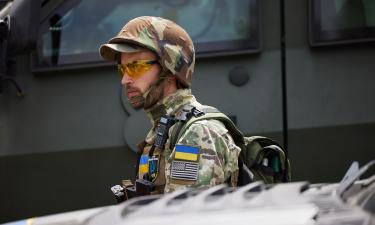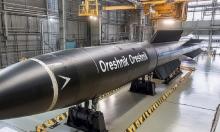Surface and underwater vessels face tough competition in modern navy
Surface vessels have turned out to be the weakest and the most vulnerable link in the antisubmarine war
On May 24 the audience of the Russian Channel 1 found out that the military training was taking place at the Russian Northern Fleet, where the students of the General Staff Academy were shown how antisubmarine warfare forces work. As the legend says: “The unidentified submarine of the heavy nuclear-powered missile cruiser “Peter the Great” was detected in half an hour. Still, the submarine had already started the torpedo attack. Big anti-submarine vessel “Admiral Levchenko” destroyed the torpedoes…” This is the legend of the training, which is taking place at the Northern Fleet. In reality, everything looks a bit different. Absolutely different, to be precise. 
This article poses a problem of the opposition of submarine and surface fleets, or the present-day opposition of surface vessels and submarines. The problem is especially acute, as it concerns the integral part of the Russian nuclear shield. The nuclear-powered strategic submarines carry a great part of the country's nuclear resources and cost enormous sum of money to the state. No country can afford losing submarines in battle.
The idea of maintaining one's own submarines and destroying the hostile ones quickly has led to the struggle between submarines and anti-submarine vessels. From the earliest times this task has been handed over to an anti-submarine vessel. In fact, it is an ordinary ship equipped with the special technical devices of locating and destroying the enemy's submarines. The noises made by the submarine screws are detected with the hydro acoustic equipment. According to them the location, distance and speed of the object are identified. Then in accordance with the received target designation antisubmarine weapon systems begin their work.
It should be mentioned that the development engineers were not twiddling their thumbs as well. Since the antisubmarine vessels had appeared, the engineers were doing their best to lessen submarines' noisiness, minimizing the possibility of their location. Dramatic progress in this sphere was achieved: during the recent 25 years the noisiness of the submarine was lessen by 30 times. Together with modern hydro acoustic systems submarines have succeeded greatly in lead on the detection range of the modern antisubmarine vessel as well. For reference, the submarine has tenfold lead in range of detection of modern antisubmarine vessel. Equipped with highly sensitive hydro acoustic system, cruise missiles and long-ranged remote-controlled torpedoes, the system of satellite navigation and communications facilities in underwater position, the submarine has turned into threatening enemy that is difficult to catch and is able to employ its main tactical feature – secrecy – and to beat the enemy.
At the same time the views on the construction and the use of the antisubmarine vessel has not really changed. It is still the same old “rattling” across the miles (the sound is spread under water quicker and for longer distances) vessel, which is traditionally constructed. Its high noisiness does not allow it to use its potential of the modern hydro acoustic detecting set to the fullest. There can be funny situations: when a warrant officer who served all his life on the vessel “Admiral Chabanenko” was asked how often he detected the enemy's submarines, he answered that twice indeed during 14 years of service. This means that the submarine can destroy a ship before the latter is able to identify the threat.
Here's an example: the incident has not seen the publicity except for the website of training “Joint Winter 2004” in Norwegian only. The thing is that during the NATO training in Norway, Norwegian diesel submarine “Joint Winter 2004” secretly penetrated into British fleet formation of the “enemy's” assault force and wracked the amphibious transport dock “Albion”, aircraft-carrier “Invincible”, frigate “Iron Duke” and the destroyer “Manchester”. The escort did not detect the submarine. The captain of “Utvaer” even surfaced under periscope of Albion's wake and took a picture of it to support the recordings of his “deeds” in the logbook. In the end the umpires of the training were forced to remove “Utvaer”, which had been launched 14 years before, for 72 hours to make it possible for the training to go on somehow!
At present the surface vessels have turned out to be the weakest and the most vulnerable link in the antisubmarine war. The main reason for this is the high noisiness and the low detection range of the board detecting set, too low for the antisubmarine weapons to function.
The Pentagon decided to apply different tactics to solve this problem. Americans decided to transfer the antisubmarine war under water: the multi-purpose submarines are the key and the most resistant element of the existing and the future American naval forces. These submarines are the most threatening to the sustainability of the Russian nuclear-powered submarines, which are the important constituent of the Russian nuclear forces.
In order to compete with the underwater fleet of the USSR the construction of the multi-purpose nuclear-powered submarines “Sea wolf” began in the US. When for objective (mainly economic) reasons the operational area of the Russian naval fleet was reduced to the coastal waters,the “Sea wolf” scheme was cut down and the construction of the multi-purpose nuclear submarines “Virginia” began. The latter ones were meant to solve the problems in the coastal area of the remote places of military operations.
It is for the multi-purpose submarines that the new system of antisubmarine weapon of long range for the surprise and secret destruction of missile-firing submarines is being developed by the naval forces of the USA (these include low-noise carrier-hydroplane, which delivers the antisubmarine torpedo as close to the target as possible).
As a result Americans possess the biggest fleet of the multi-purpose nuclear submarines (more than 50 submarines), which are the most dangerous for the submarine carriers of transcontinental missiles. Moreover, Americans are planning to launch 30 submarines more by 2015, which is outlandish! Such armada would be able to block our fleet (both submarine and surface) almost completely.
Nowadays American and NATO multi-purpose submarines are frequently present in Barents Sea near the main bases of the Russian Northern Fleet. If the leaders of the Russian naval forces continue the antisubmarine war by means of attacks instead of improving multi-purpose submarine fleet, the results of the possible war will be predictable and the glorious victories of the navy men will remain only in the legends for the General staff Academy students.
Artiom Maziuk
Subscribe to Pravda.Ru Telegram channel, Facebook, RSS!




